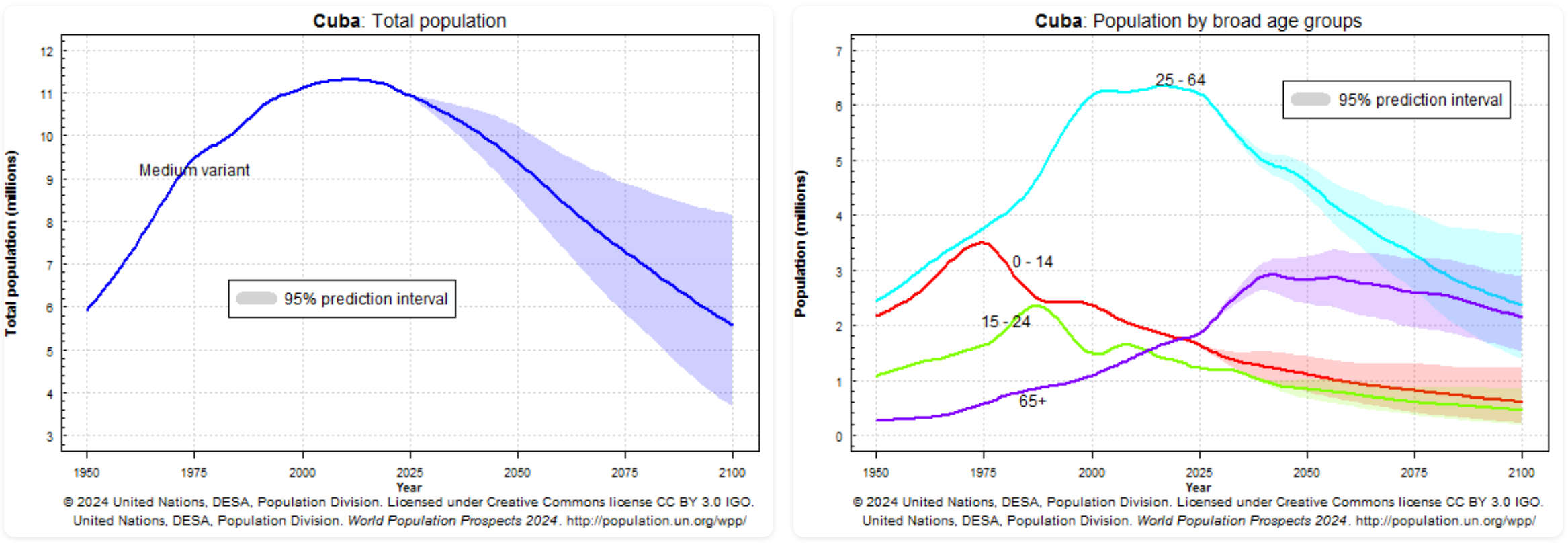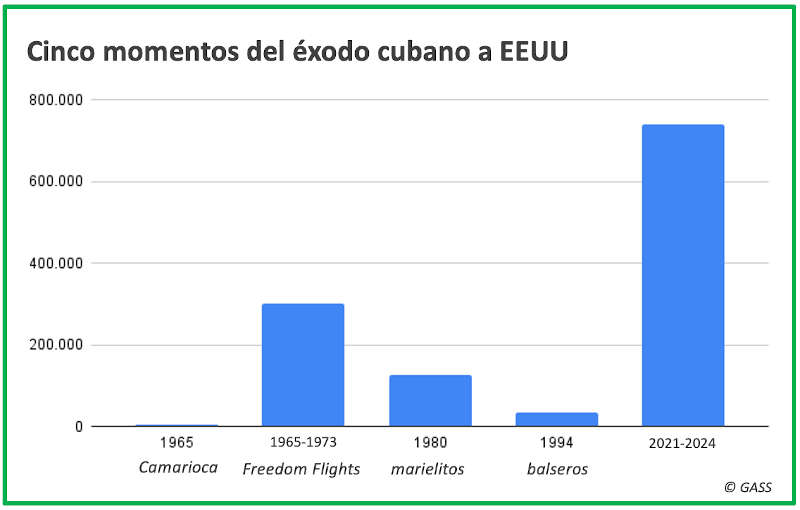In the picture
Havana [flunkey0]
Cuba is going through the biggest migration wave in its history. More than one million people have left the island since the Castro regime stepped up its repression in mid-2021 to quell protests against what is the worst economic crisis since Cuba left Spanish sovereignty. Already with a low birth rate fees , the departure of young people, with a slight majority of women, is leading the Caribbean nation to a pronounced aging that will negatively affect any future development.
The warning voice has been given by the Castro regime itself, which is not at all inclined to offer demographic references. In July 2024, the deputy head of the National Statistics and Information Office (ONEI), Juan Carlos Alfonso Fraga, exposed before the deputies of the Cuban Parliament the decrease of 10.1% of the effective population of the island with respect to December 2020. This left Cuba below 10 million people, a number "similar to what Cuba registered sometime in 1985" and which the country surpassed to reach 11.3 million inhabitants in the early 2010s. Since then, the total population began to decline due to a fertility rate that had been below replacement level for some time.
To this aging process has been added, due to the severe economic crisis and political repression, a migratory wave that surpasses all others experienced in the sixty years of communism. Without yet fully including the effect of this last depopulation, the UN Economic and Social Affairs department estimates that by 2100 Cuba's population could reach a little less than 6 million people in an intermediate scenario (in the worst scenario it would fall below 4 million).
The Cuban government refuses to give concrete figures on the recent massive outflow of citizens, claiming that until they have been out of the country for two years, they are still considered residents. This forces researchers to collect data from the receiving countries and to draw their own models. The conclusion of Cuban demographer and economist Juan Carlos Albizu-Campos is that in reality only 8.62 million people reside on the island, pointing to an 18% decrease in population between 2022 and 2023. Thus, more than one million people would have left Cuba since 2021, a Issue that is in line with the number of Cubans registered in the United States and, to a lesser extent, in other countries.
In Cuba, censuses are carried out every ten years, but since the last survey 12 years have passed, and a census planned for 2024 has been postponed. According to ONEI's deputy chief, the government is ready to carry it out in 2025, after a delay that he attributes to "external aggressions" and "internal problems". Cuba empties and the regime weakens.



